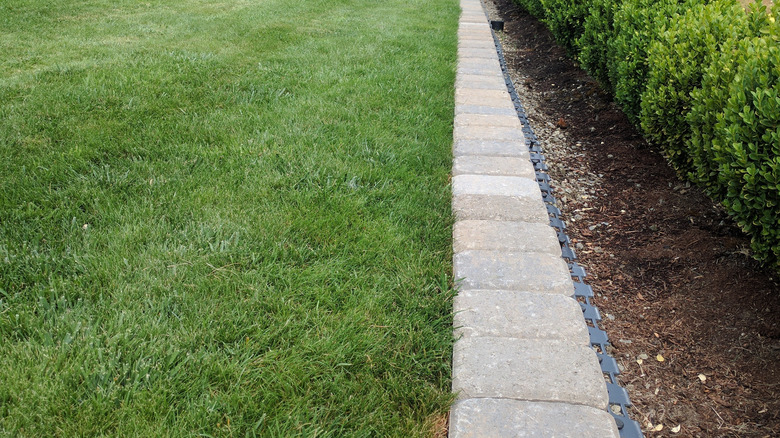What To Know About Using Pavers To Edge Your Lawn
Stone pavers are often used for patios, but you also can use them to create a border between your lawn and a garden or other type of landscaping. They yield a distinctive look that's difficult to replicate with other materials, and they make it easy to create a clearly defined, sharply-edged bed in your lawn. Before using them, though, it's important to understand that they create a wider border than steel or plastic edging material. If you have flowers or other plants that tend to spread out of the bed, stone pavers can give them some room without infringing on the grass plants in the lawn. They also work well in yards with slopes, as they are adaptable to various angles.
Stone pavers also are a good choice when you want gradual curves in the edging or a perfectly straight edge. If you would like a bit of extra stability in the border layout, look for pavers that have rounded edges that slide together, slightly interlocking. However, most of them are heavy enough that they won't slide around if installed correctly by digging a trench. Just keep in mind they don't work as well for creating a border with tight curves — digging a trench and pouring cement is the best way to edge your tightly curved lawn.
Selecting the best pavers
Stone pavers are available in a few different configurations, primarily natural stone, brick, and concrete. Natural stone pavers are a popular selection for lawn edging, as they have a density and strength that works well in a yard. They will absorb some moisture, but they are not as porous as some of the other options. This makes them ideal edgers as they can withstand constant exposure to weather, precipitation, and damp soil. Limestone is a common natural stone paver used for lawn edgers because of its strength and durability.
Concrete paver stones are also a popular choice. They can adapt to almost any design, whether that's creating a weathered look or a clean, modern appearance. Because of the shape of the concrete pieces, you can often line them up tightly together, preventing weed growth between them. They also are easier to use when creating a slight curve in the edging border because of the various shapes that are available.
Traditional brick works well for edging, and you can lay them end to end for a narrow border or side to side for a wide border. However, if you want a tight fit to choke out weeds, it's best to stick with a mostly straight line on the border so the bricks can line up with no gaps between them.
Digging a trench
Digging a trench is a vital step in creating a lawn edging with stone pavers. To make a proper edge, you need to bury the pieces in the ground so the entire layout is held tightly in place to prevent unwanted shifting. It's up to you how much of the paver stone you want to see sitting above the ground, but ½ of an inch is a minimum recommendation. You also need to place a layer of 1 to 2 inches of sand inside the trench before adding the paver stones. This provides a sturdy base that makes it easier to create an equal height along the row of pavers as the sand shifts.
Before you start, you may want to lay out a rope along the length of the planned layout to ensure it's what you want. When you start digging, use a shovel or a flat-nose spade to cut through any sod and remove existing material. Dig the trench roughly the same width as the stones. After removing these materials, use a tamper to compact the soil inside the trench as much as possible before placing a layer of sand over the top.
Now you're ready to begin laying out the stone pavers. Lay them end to end or side to side, depending on your preference. Afterward, place them tight together and use a rubber mallet to tap them down onto the sand layer. Finally, use a level to ensure they're at the same height.


